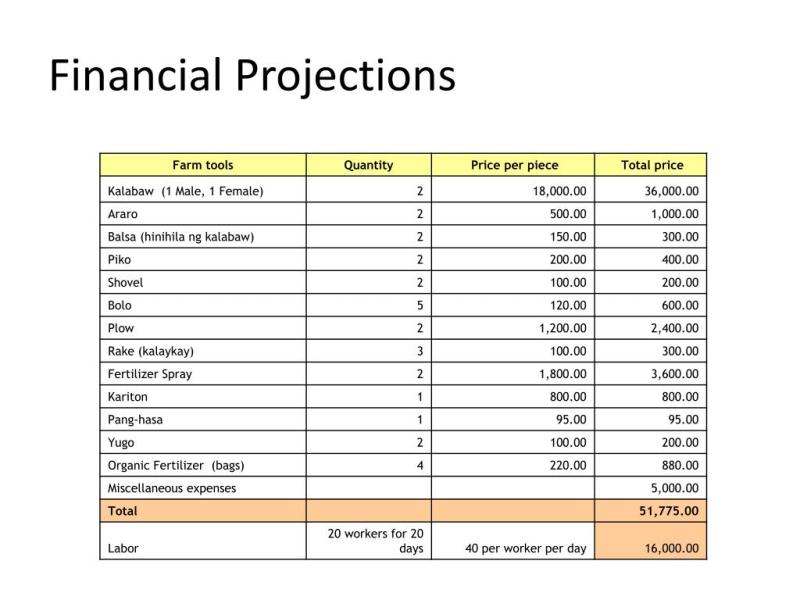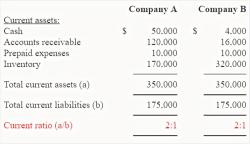What can be included in your financial projections?
Effective financial projections provide a detailed and realistic estimate of a business's future financial performance. They are crucial for making informed decisions, securing funding, and planning for growth. Here are key components that can be included in your financial projections:
1. Sales Forecast:
- Unit Sales and Pricing: Estimate the number of units you expect to sell and the price per unit.
- Revenue Breakdown: Break down revenue by product or service categories.
2. Expense Projections:
- Operating Expenses: Estimate costs related to day-to-day operations, including rent, utilities, salaries, and other variable and fixed costs.
- Cost of Goods Sold (COGS): Calculate the direct costs associated with producing goods or services.
- Sales and Marketing Expenses: Include costs related to advertising, promotions, and sales efforts.
3. Profit and Loss (P&L) Statement:
- Gross Profit: Calculate gross profit by subtracting COGS from total revenue.
- Net Profit: After deducting all expenses, calculate the net profit.
4. Cash Flow Statement:
- Operating Activities: Detail cash inflows and outflows from core business operations.
- Investing Activities: Include cash flows related to investments in assets.
- Financing Activities: Reflect cash flows from financing, such as loans, equity investments, or repayments.
5. Balance Sheet:
- Assets: List current and non-current assets (e.g., cash, inventory, equipment).
- Liabilities: Include current and long-term liabilities (e.g., loans, accounts payable).
- Equity: Reflect the owner's equity or shareholder equity.
6. Break-Even Analysis:
- Break-Even Point: Identify the point at which total revenue equals total costs, resulting in neither profit nor loss.
7. Financial Ratios:
- Liquidity Ratios: Assess the company's ability to meet short-term obligations.
- Profitability Ratios: Evaluate the company's ability to generate profit.
- Solvency Ratios: Measure the company's long-term financial viability.
8. Sales and Revenue Growth Projections:
- Year-over-Year Growth: Project the percentage growth in sales and revenue from one year to the next.
- Quarterly or Monthly Projections: Break down growth projections on a more granular level.
9. Assumptions and Methodology:
- Clearly outline the assumptions underlying your projections, such as market trends, pricing strategies, and economic conditions.
- Explain the methodologies used in your calculations, including any forecasting models.
10. Sensitivity Analysis:
- Conduct sensitivity analysis to understand how changes in key variables (e.g., sales volume, pricing, costs) can impact your financial projections.
11. Scenario Analysis:
- Model different scenarios (best-case, worst-case, and most likely) to assess the range of potential outcomes.
12. Cash Reserve Planning:
- Plan for maintaining an adequate cash reserve to cover unexpected expenses or economic downturns.
13. Funding Requirements:
- Identify the need for external funding and specify the amount and purpose of funding required.
14. Use of Funds:
- If seeking funding, outline how the funds will be used to support business operations or expansion.
15. Financial Key Performance Indicators (KPIs):
- Include relevant financial KPIs, such as return on investment (ROI), net profit margin, and current ratio.
16. Timeline of Projections:
- Clearly state the timeline covered by your projections (e.g., monthly for the first year, quarterly for the next two years, and annually thereafter).
17. Narrative Explanation:
- Accompany your financial projections with a narrative that explains the assumptions, risks, and strategic considerations influencing your forecast.
18. Regular Updates:
- Plan for regular updates to your financial projections as new information becomes available or circumstances change.
When creating financial projections, it's essential to be realistic, conservative in your estimates, and transparent about your assumptions. Regularly review and update your projections based on actual performance and changing market conditions.
Building a comprehensive view: What can be included in your financial projections?
Financial projections can include a wide range of information, depending on the specific needs of your business. However, some common components include:
- Income statement: This shows your projected revenue and expenses for a specific period of time.
- Balance sheet: This shows your projected assets, liabilities, and equity at a specific point in time.
- Cash flow statement: This shows your projected cash inflows and outflows for a specific period of time.
- Key performance indicators (KPIs): These are metrics that are specific to your business and that you use to track your progress towards your goals.
- Sensitivity analysis: This shows how your financial projections change under different assumptions.
In addition to these core components, you may also want to include other information in your financial projections, such as:
- Capital expenditure plan: This shows your planned investments in new assets, such as equipment or inventory.
- Debt repayment plan: This shows how you plan to repay your outstanding debt.
- Funding plan: This shows how you plan to finance your business, such as through equity or debt.
Components and elements to consider when creating thorough and effective financial projections
When creating financial projections, it is important to consider all of the relevant factors, both internal and external. Internal factors include things like your sales history, cost structure, and competitive landscape. External factors include things like the overall economy, industry trends, and government regulations.
Here are some specific components and elements to consider when creating thorough and effective financial projections:
- Revenue: Consider your historical sales data, as well as your industry growth trends and competitive landscape, to project your future revenue.
- Expenses: Consider your historical cost structure, as well as any planned changes to your business operations, to project your future expenses.
- Cash flow: Consider your projected revenue, expenses, and capital expenditures to project your future cash flow.
- Key performance indicators (KPIs): Select KPIs that are specific to your business and that align with your strategic goals.
- Sensitivity analysis: Consider different scenarios, such as a change in sales growth or a change in interest rates, to see how they would impact your financial projections.
Tips for ensuring accuracy and relevance in your financial forecasts
Here are some tips for ensuring accuracy and relevance in your financial forecasts:
- Use realistic assumptions. When making assumptions about your future performance, be realistic. Don't overestimate your sales or underestimate your costs.
- Update your forecasts regularly. The business world is constantly changing, so your forecasts should be too. Update your forecasts regularly to reflect changes in the economy, your industry, or your business itself.
- Use a forecasting tool. There are a number of forecasting tools available that can help you to develop more accurate and reliable forecasts. These tools can help you to automate the forecasting process and account for complex factors such as seasonality and economic trends.
- Get feedback from others. Once you have developed your financial projections, share them with other stakeholders, such as your accountant or board of directors. They can provide you with feedback and help you to identify any areas that need improvement.
By following these tips, you can create financial projections that are accurate, relevant, and can help you to achieve your business goals.











